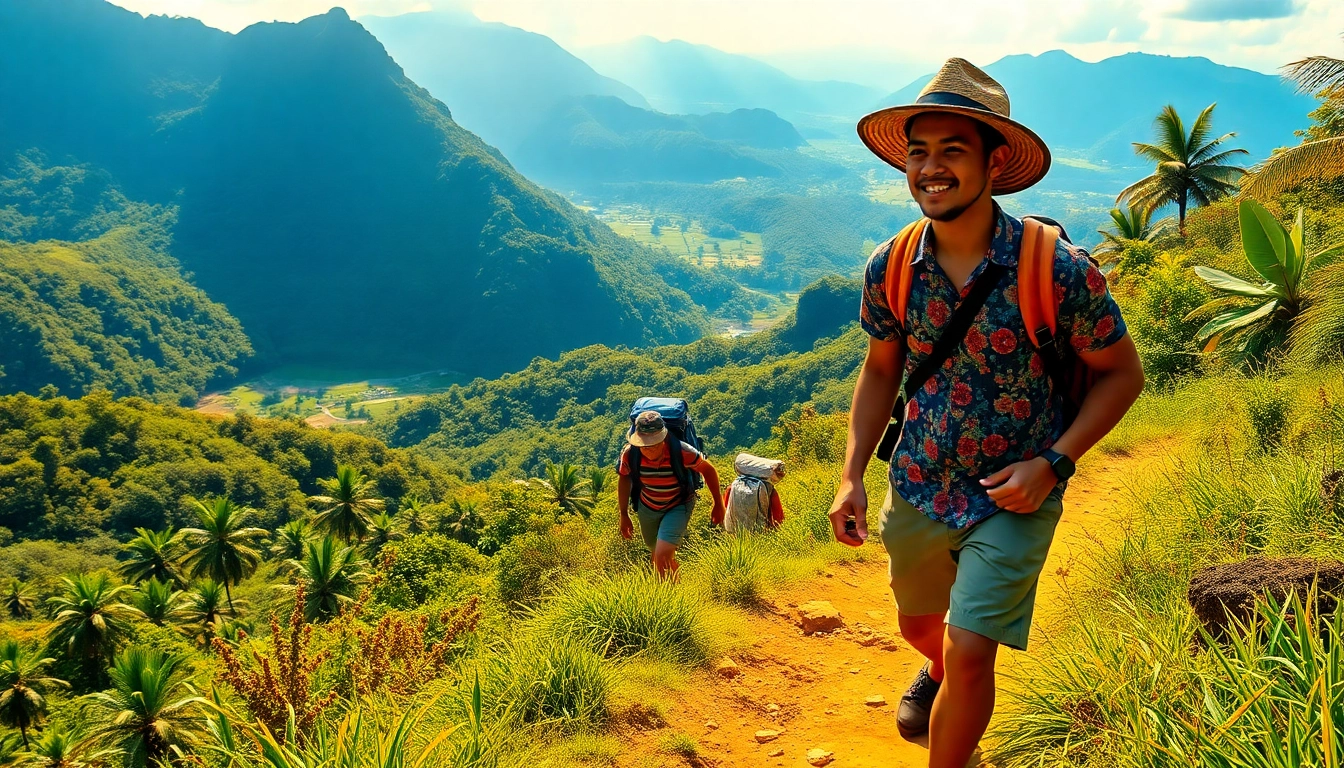Introduction to Lombok: A Unique Indonesian Destination
Nestled in the heart of Indonesia, Lombok stands as an enchanting island destination that blends breathtaking natural beauty with rich cultural heritage. Often overshadowed by its more famous neighbor, Bali, Lombok offers travelers a pristine escape filled with unspoiled beaches, majestic mountains, and vibrant local traditions. Its diverse landscape includes lush rainforests, towering volcanoes, and secluded islands—each presenting unique opportunities for exploration and adventure. Whether you are an avid traveler seeking adrenaline-pumping activities or a culture enthusiast craving authentic local experiences, Lombok provides an ideal setting to satisfy all interests.
Planning a trip to such a diverse and expansive destination can be complex without proper guidance. To truly maximize your experience, understanding the key attractions, culture, and practical travel tips is essential. This comprehensive guide aims to equip you with in-depth insights and expert advice, ensuring your journey through Lombok is memorable and well-organized.
1. Key Attractions and Natural Wonders
1.1 Iconic Natural Landmarks
Lombok boasts some of Indonesia’s most stunning natural landmarks. The crown jewel is Mount Rinjani, Indonesia’s second-highest volcano standing at 3,726 meters. Trekking Mount Rinjani is a challenging yet rewarding experience, offering panoramic views, dense volcanic craters, and serene hot springs. Guided treks are highly recommended for safety and expert navigation.
The island’s Gili Islands—Gili Trawangan, Gili Air, and Gili Meno—are renowned for their crystal-clear waters, vibrant coral reefs, and laid-back vibe. These islands are perfect for snorkeling, diving, or relaxing on white sandy beaches. For waterfalls, the Sendang Gile and Tiu Kelep waterfalls against the backdrop of Mount Rinjani provide lush scenery and refreshing dips.
1.2 Unique Cultural and Heritage Sites
Lombok’s cultural tapestry is woven with indigenous Sasak traditions. Visit traditional villages like Sade and Ende to observe daily life, traditional weaving, and unique architecture featuring thatched roofs and intricate carvings. The Sasak people’s vibrant ceremonies and dances offer a glimpse into their spiritual world, enriching visitors’ understanding of Lombok’s identity.
1.3 Why Lombok is a Must-Visit Guide for Travelers
With its blend of unrivaled natural beauty and culturally authentic experiences, Lombok stands out as an increasingly sought-after destination. Unlike tourist-heavy Bali, Lombok presents a quieter, more genuine Indonesian experience. Its diverse landscapes cater to outdoor adventurers, eco-tourists, and cultural explorers alike. For travelers seeking a peaceful yet adventurous escape, Lombok offers an ideal guide into Indonesia’s hidden paradise.
2. Planning Your Visit: Essential Tips and Resources
2.1 Best Time to Visit and Seasonal Considerations
The optimal time to visit Lombok is during the dry season, which spans from May to September. During these months, the weather is typically sunny, with minimal rain, making outdoor activities like trekking, beach lounging, and diving more enjoyable. The wet season, from October to April, brings heavier rainfall and possible tropical storms, which can disrupt travel plans.
Consider local festivals like the Bau Nyale Festival (February-March) for cultural immersion. The festival celebrates the Sasak legend of Nyale worms, with colorful ceremonies and traditional performances that highlight Lombok’s vibrant traditions.
2.2 Accommodations, Transportation, and Logistical Tips
Lombok offers a wide range of accommodation options—from luxury resorts in Senggigi to budget hostels in Mataram and eco-lodges near traditional villages. Renting scooters is the most convenient way to explore the island independently, but travelers should exercise caution and adhere to local traffic laws.
For longer distances or group tours, hiring a private driver or using organized tours can save time and ensure safety. Domestic flights connect Lombok International Airport to major Indonesian hubs, while ferries and speedboats provide access to the Gili Islands and neighboring islands.
2.3 Budgeting and Safety Advice for Travelers
Budgeting for a trip to Lombok depends on your travel style. Mid-range travelers can expect to pay around $50–$100 per day for accommodations, meals, and activities. Currency exchanges are readily available, and paying in local currency (IDR) is often preferred.
Safety precautions include avoiding unlicensed transportation providers, being cautious with water activities, and respecting local customs. Always carry a copy of your ID, stay hydrated, and use sun protection to prevent heat exhaustion.
3. Top Activities and Experiences in Lombok
3.1 Iconic Sights: Mount Rinjani, Gili Islands, Waterfalls
Exploring Mount Rinjani is a bucket-list experience, with guided multi-day treks providing breathtaking views and interaction with local guides and porters. The Gili Islands are must-see spots for relaxation and marine adventures, offering some of the best snorkeling and diving sites in Indonesia. The sendang Gile and Tiu Kelep waterfalls reveal the island’s lush interior, with cool streams perfect for a refreshing break.
3.2 Adventure Activities: Surfing, Trekking, Diving
Lombok’s coastline is renowned for its world-class surf spots like Senggigi and Kuta Beach. Surf schools cater to beginners and advanced surfers alike. Trekking Mount Rinjani offers options for different skill levels, from sunrise hikes to full ascent expeditions. Diving enthusiasts can explore vibrant coral reefs around the Gili Islands, with numerous dive centers providing certifications and excursions.
3.3 Cultural Experiences: Local Markets and Traditional Crafts
Visiting traditional markets such as Pasar Mandalika or Sukarara provides the opportunity to buy handcrafted textiles, wood carvings, and local produce. Participating in weaving workshops or watching traditional Sasak dances can deepen your cultural appreciation. Engaging with local artisans supports sustainable tourism and preserves Lombok’s unique heritage.
4. Local Guides and Tours: Making the Most of Your Journey
4.1 How to Choose Reliable Guides in Lombok
Reliable guides are essential for enriching your Lombok experience safely and authentically. When selecting guides or tour operators, look for certifications, reviews, and affiliations with recognized local tourism associations. Personal recommendations, either from trusted travel communities or hotel concierges, can lead to trustworthy providers. It’s advisable to clarify itineraries, costs, and inclusions upfront.
4.2 Benefits of Hiring a Local Guide for Tailored Experiences
Local guides possess invaluable knowledge of Lombok’s hidden gems, cultural nuances, and safety considerations. They can customize your itinerary based on your interests, whether it’s exploring off-the-beaten-path villages, participating in traditional ceremonies, or navigating remote hiking trails. Furthermore, employing local guides fosters sustainable tourism and economic support for indigenous communities.
4.3 Recommended Guided Tours and Packages
Top-rated tour operators offer packages such as trekking Mount Rinjani, island-hopping tours to Gili Islands, or cultural village visits. Many include transportation, permits, meals, and local guides, ensuring a hassle-free experience. Consider multi-day treks or combined adventures for maximum immersion.
5. Preserving and Respecting Lombok’s Environment and Culture
5.1 Eco-Friendly Travel Practices and Responsible Tourism
Sustainable travel is crucial to conserve Lombok’s pristine environment. Visitors should minimize plastic waste by carrying reusable bottles and bags, avoid single-use plastics, and participate in beach cleanups. Respect ecosystems by avoiding touching or collecting coral and marine life during diving and snorkeling.
Opt for eco-lodges or accommodations committed to green practices, such as solar power and waste management. Choose tours that emphasize low-impact activities and support conservation initiatives.
5.2 Supporting Local Communities and Artisans
Engaging with local artisans and markets helps sustain traditional crafts and livelihoods. Purchase authentic souvenirs directly from community cooperatives or family-owned businesses. Participating in cultural workshops or cooking classes promotes cultural exchange and economic empowerment.
5.3 How to Leave a Positive Impact During Your Visit
Respect cultural norms, dress modestly when visiting sacred sites, and seek permission before photographing locals. Contribute to community-based tourism projects, volunteer in conservation efforts, or donate directly to local initiatives. Leaving a positive impact enhances your travel experience and ensures the preservation of Lombok’s unique heritage and environment for future generations.

